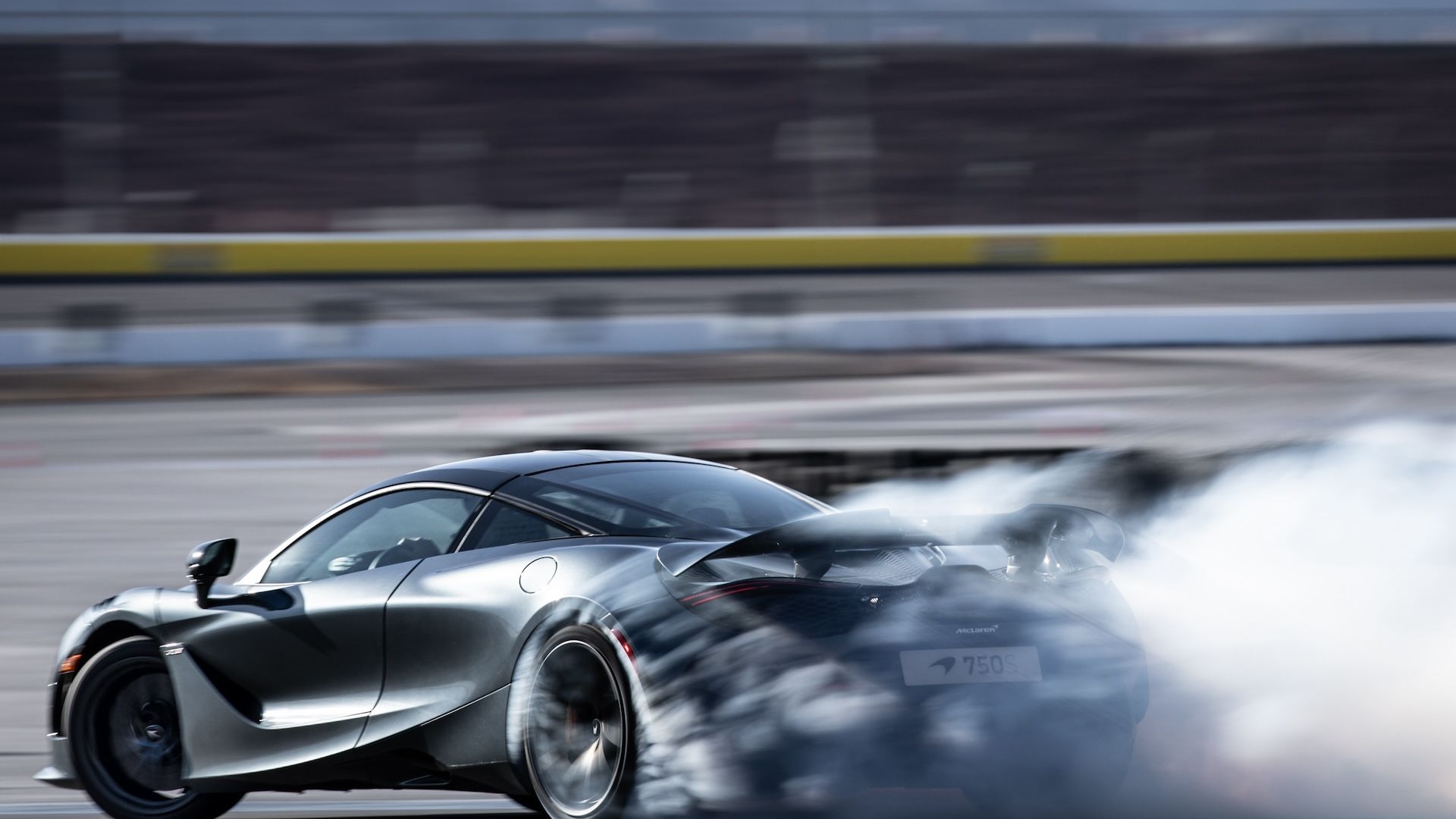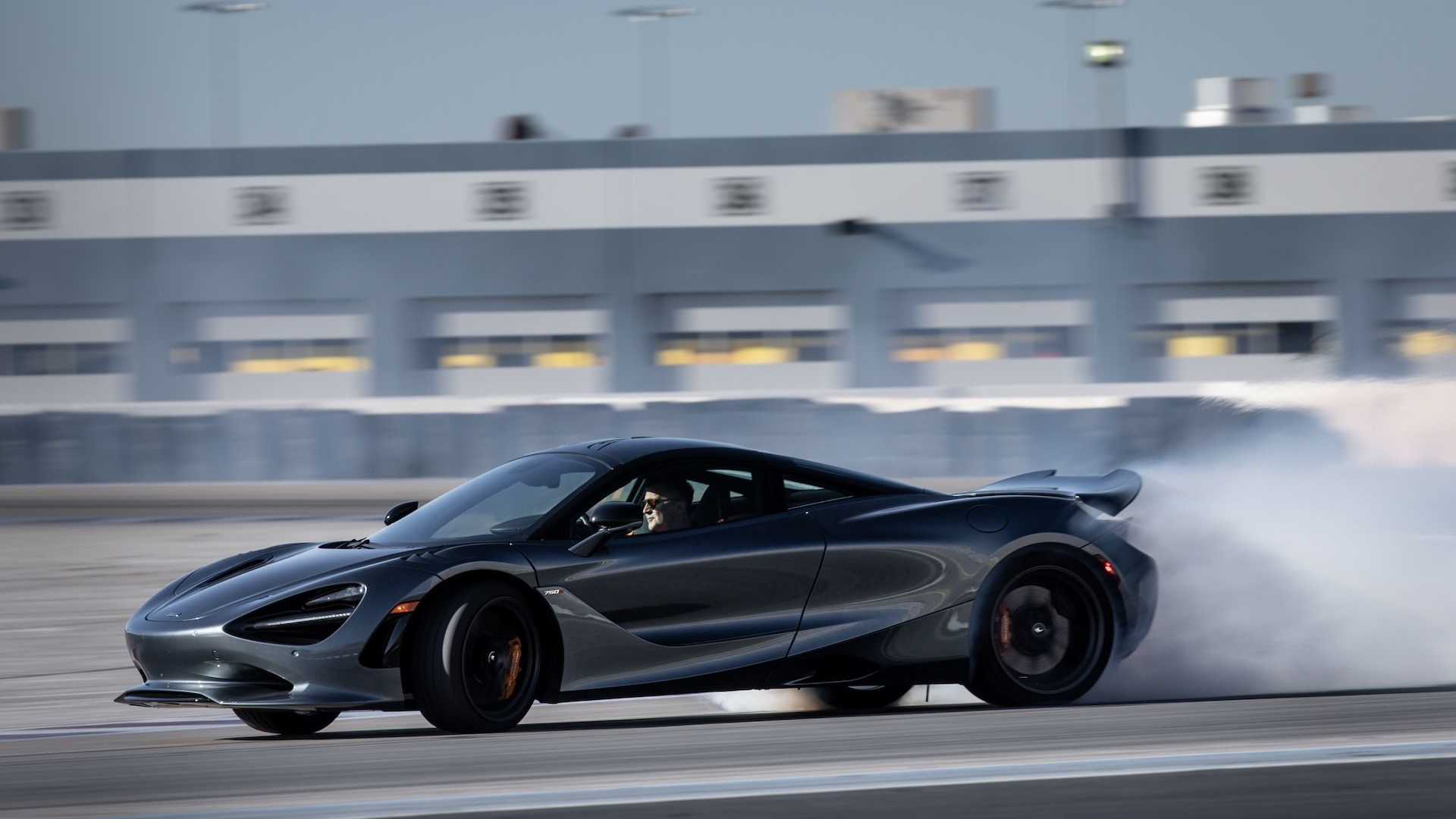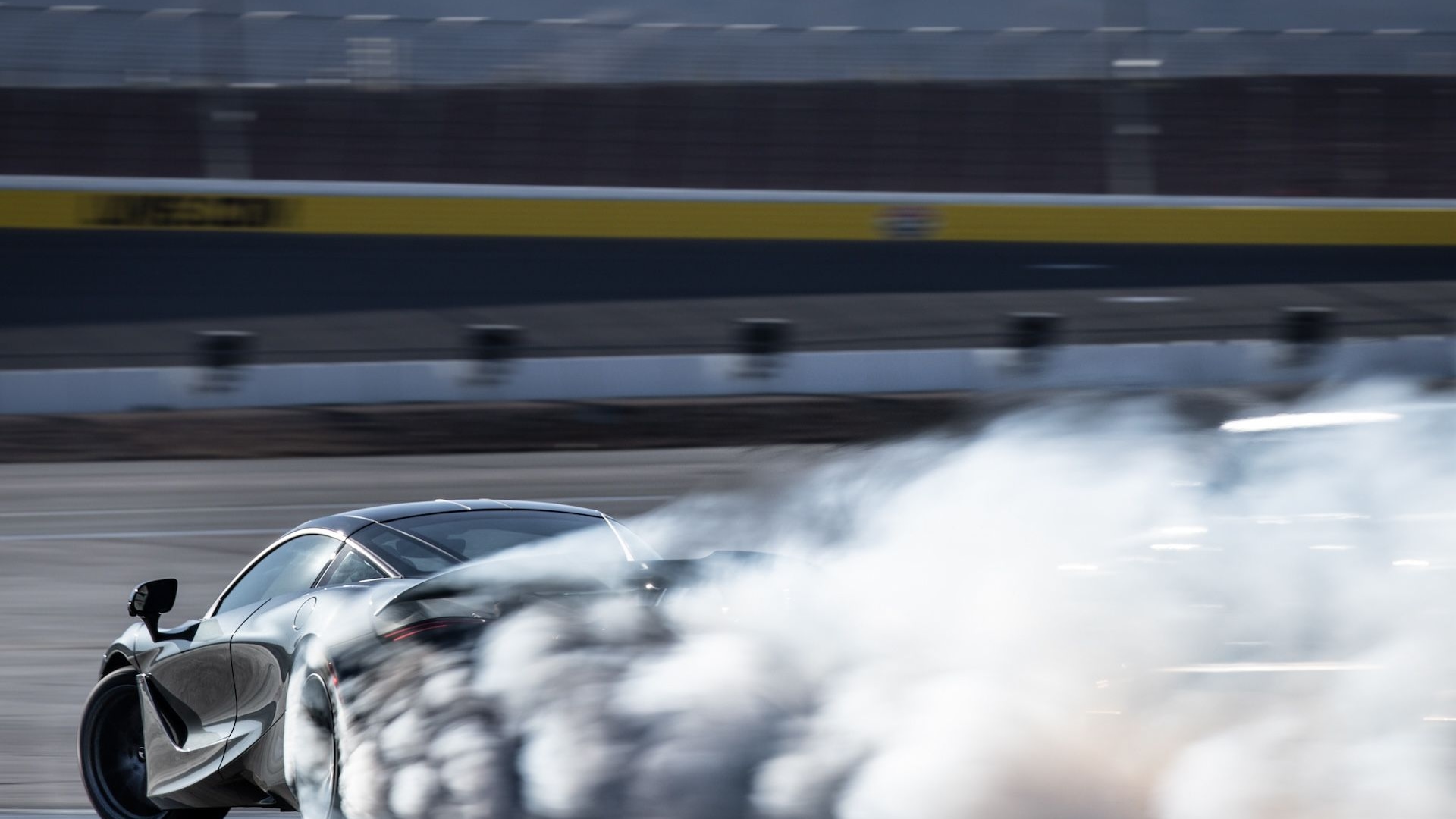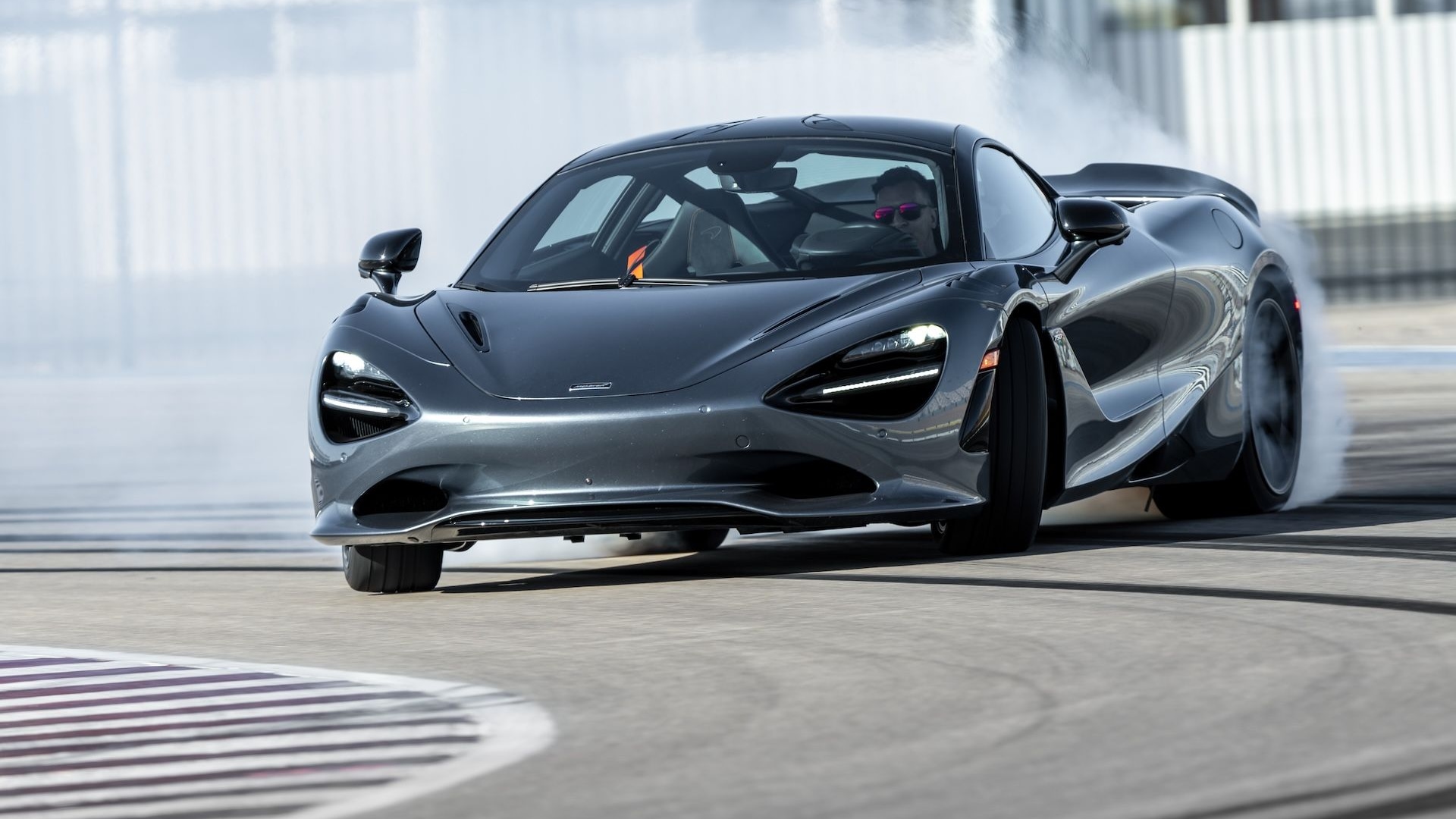In a persistent rain, the 2024 McLaren 750S bobbles coming out of a sharp right-hand turn on the road course at Las Vegas Motor Speedway. The Pirelli P Zero Corsas can’t find traction, and it takes a light touch on all the controls to keep this updated supercar pointed in the right direction. On the next straight, I go for more gas, but the car’s 740 hp hits hard and even 50% throttle breaks the rear wheels loose in fourth gear. This drive program was meant to show the expanded envelope of performance the 750S has over its 720S successor, but the rain means that won’t be possible.
At first glance it would be hard to tell that the 750S is new at all. It looks very much like the 720S and shares the same carbon-fiber tub and basic body as its predecessor, but 30% of the parts are new and all of the changes were meant to not only improve performance but also to increase driver engagement.
There’s nothing quite as engaging as driving a car with too much power on a slick racetrack. The problem is balancing the track’s sketchy traction with the 750S’s immense performance potential, and I’m probably left using a quarter of what the car can do.

2024 McLaren 750S first drive, Las Vegas, February 2024

2024 McLaren 750S first drive, Las Vegas, February 2024
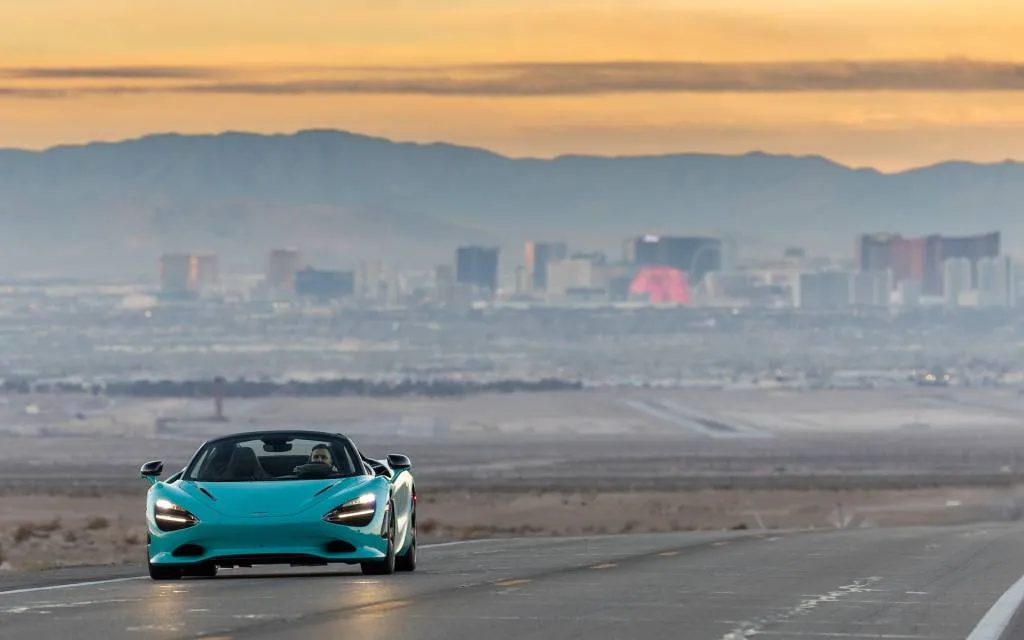
2024 McLaren 750S first drive, Las Vegas, February 2024
McLaren 750S: Exotic V-8 power
The increase in power comes by way of additional but undisclosed boost for the twin-turbocharged 4.0-liter V-8, as well as lightweight pistons from the 765LT. The extra boost means the engine can use more gas, so McLaren adds another fuel pump to increase fuel flow. The ECU is also retuned to deal with the extra power, which now checks in at 740 hp and 590 lb-ft of torque versus 710 hp and 568 lb-ft in the 720S.
This is no normal V-8. It has a buzzsaw sound thanks to a flat-plane crank, and dry-sump lubrication prevents oil starvation during the high-g cornering the car encourages. It’s backed by a quick-shifting 7-speed sequential transmission that has a lower final drive ratio and a new limit downshift function that remembers downshift requests and makes them when the revs allow it. That buzzsaw sounds like it got a tuneup, too. The 750S gets a new center-exit, stainless-steel exhaust that saves 4.8 pounds, and McLaren gave it a better crescendo by enhancing some sounds and reducing others.
On a road drive through the Valley of Fire State Park, the V-8 shows it’s content to cruise along while respecting speed limits, but a boot of the gas pedal elicits a violent response from the powertrain that is simply too much for wet traction. The power takes a beat to come on, but then it hits violently, and the tail wag I get when briefly flooring it at freeway speeds is enough of a warning to prevent me from trying it again. Without dry conditions to report on what it’s like to access full power, I’ll have to settle for the numbers, which are more than supercar-worthy: 0-60 mph in 2.7 seconds, 0-124 mph in 7.2 seconds, 0-186 mph in 19.8 seconds, the quarter mile in 10.1 seconds, and a top speed of 206 mph. Those numbers are bonkers, and they’re mostly a tenth or two quicker than the 720S, though the top speed decreases from 212 mph due to the extra drag of the added downforce.

2024 McLaren 750S first drive, Las Vegas, February 2024
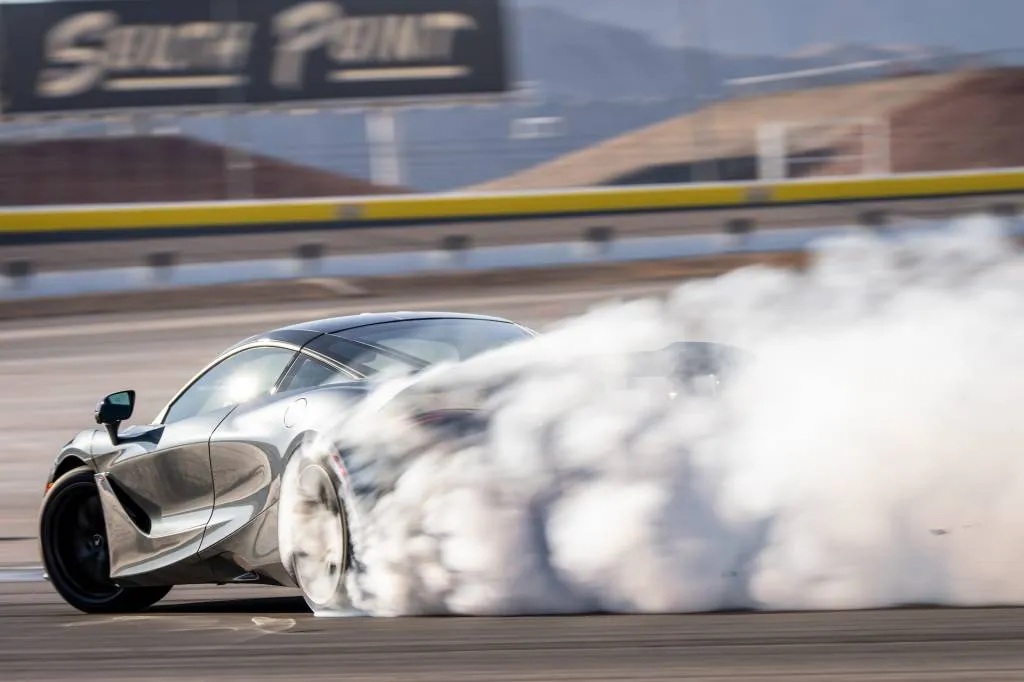
2024 McLaren 750S first drive, Las Vegas, February 2024
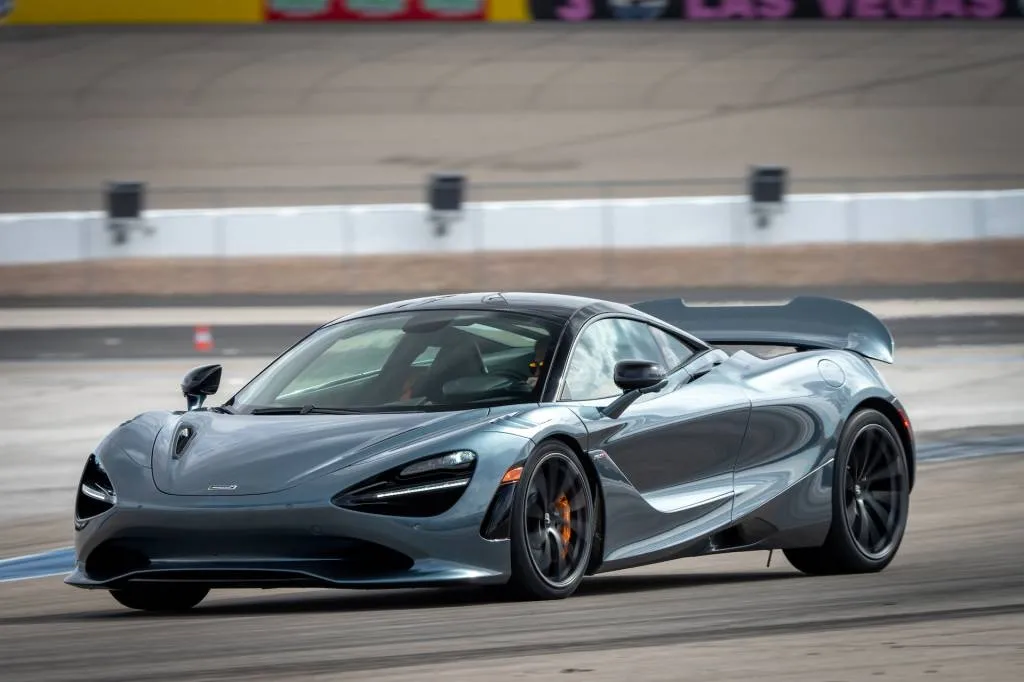
2024 McLaren 750S first drive, Las Vegas, February 2024
McLaren 750S: An expanded performance envelope
The 750S’s powertrain and suspension are adjustable separately through Comfort, Sport, and Track modes via drive mode selectors on each side of the binnacle behind the steering wheel. In turning the 720S into the 750S, McLaren engineers aimed to retain the base levels of comfort while increasing the car’s performance. In other words, they wanted to give the suspension’s Track mode more performance, while keeping the Comfort mode as-is.
That was mostly achieved through new hardware and revised software for the third generation of the brand’s Proactive Chassis Control suspension. This linked hydraulic suspension substitutes for anti-roll bars, and forces on one corner of the car affect the suspension tuning on the opposite corner to maintain balance and fight lean.
McLaren considers the springs and adjustable dampers as part of the PCC III suspension. While the hydraulic roll circuit received new software, the engineers made the front springs 3% softer and the rear springs 4% stiffer and took 4.4 pounds out of the springs and dampers with new designs. The Monocage II carbon-fiber tub remains the same, but the car has a 6 mm wider track, which was accomplished with spacers. Engineers also tuned the hydraulic power steering with a quicker ratio, though McLaren isn’t saying what that ratio is.
The upshot of the changes is quicker turn-in response, more neutral mid-corner balance, increased agility, less body roll, and more driver feel, according to McLaren. Not that the 720S needed much help, but you can always make a good thing better.
While the track drive doesn’t highlight the car at its limits, it does illustrate some of the car’s basic feel and handling prowess. Driving with the suspension in Track mode, the PCC III suspension keeps the car almost supernaturally flat, though the low ride height leaves little room for lean. The car feels light on its feet, and quickly reacts to steering and brake inputs. The hydraulic-assist steering provides a natural feel that few electric-assist systems can match, and it really helps me know when the 245/35R19 front and 305/30R20 rear P-Zero Corsas are about to let loose. That helps me catch it with a “dab of oppo” when it does give up traction.
At the other end of the spectrum is the suspension’s Comfort setting. Essentially tuned like it was in the 720S, the 750S remains a supercar that you can drive regularly without giving your organs a stress test. During my drive through the Valley of Fire State Park, I settle into a routine of choosing Comfort mode for the suspension to calm the responses, and Sport mode for the powertrain to make the crazy power easier to access. The suspension’s Sport and Track modes create some harsh impacts over bumps and jiggle over broken pavement that becomes unpleasant on the street. A new McLaren Control Launcher, activated by a button on the dash, allows drivers to store their preferred handling and powertrain settings, as well as an aero setting for the active rear wing.
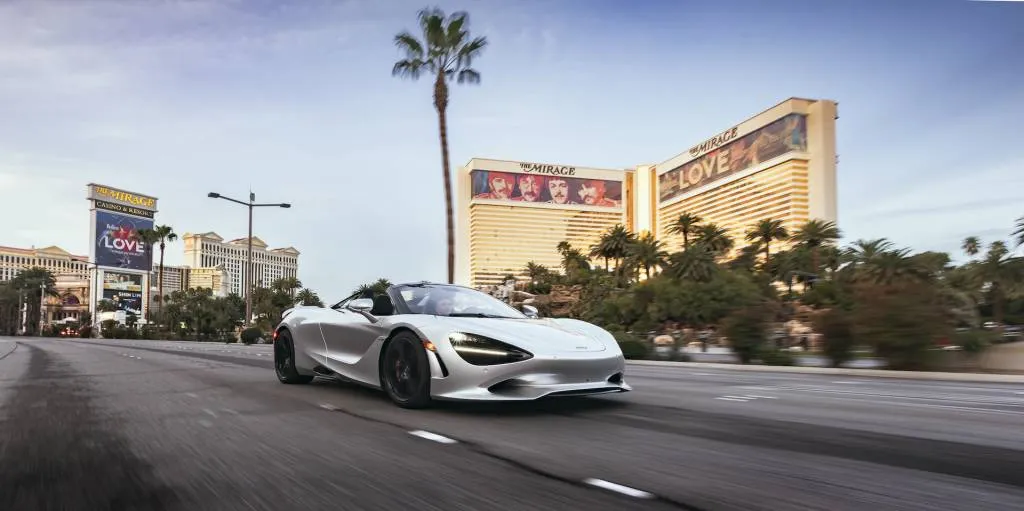
2024 McLaren 750S first drive, Las Vegas, February 2024
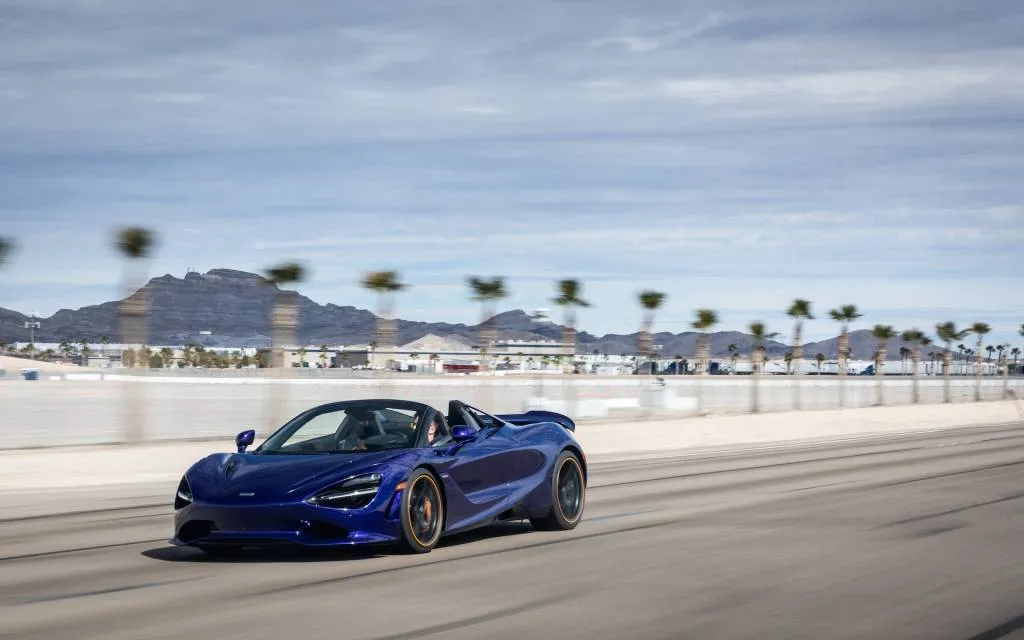
2024 McLaren 750S first drive, Las Vegas, February 2024
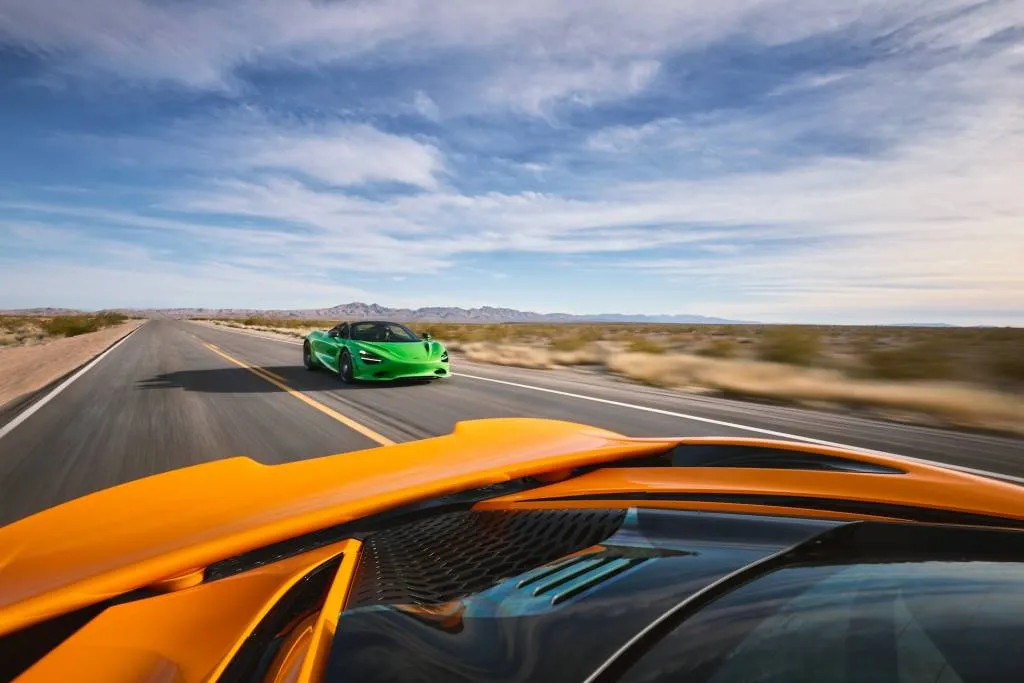
2024 McLaren 750S first drive, Las Vegas, February 2024
McLaren 750S: An everyday supercar
The everyday drivability is enhanced by a forward seating position with great visibility thanks to thin roof pillars.
A street drive in a Spider with the base brakes and a track drive in a coupe with the optional brakes show that the 750S has stopping power to match its performance potential. The standard carbon-ceramic brakes have 15.4-inch front rotors with 6-piston calipers and 15.0-inch rear rotors with 4-piston calipers. They also benefit from a new brake booster that McLaren says provides a more consistent pedal feel.
A carbon-ceramic brake upgrade package derived from the McLaren Senna’s brake system is 60% stronger than the base package and has four times the thermal conductivity. Both versions give the 750S a high, firm brake pedal whose modulation may require a learning curve, especially when making little changes under heavy braking. Given the robustness of the base carbon-ceramic brakes, however, I can’t see investing $18,050 in the upgrade unless track days are in the cards on a regular basis.
The car’s light overall feel comes by way of its design. The carbon-fiber tub gives the 750S an advantage that not even rival Ferraris enjoy. It helps drop the curb weight to just 3,062 pounds for the coupe (3,170 pounds for the Spider), according to the European DIN standard, which should be similar to the U.S. measurements. That number is 66 pounds less than the 720S, and, according to McLaren, 425 pounds less than the car’s closest competitor, which is likely the Ferrari 296 GTB coupe and 296 GTS convertible.
Some of the changes to create the 750S added weight, but McLaren more than made up for that with several weight-savings measures. Standard carbon-fiber-shell seats save 38.6 pounds, a lightweight windshield cuts 3.5 pounds, a new instrument cluster conserves 4.0 pounds, and lightweight 10-spoke wheels cut 30.8 pounds.
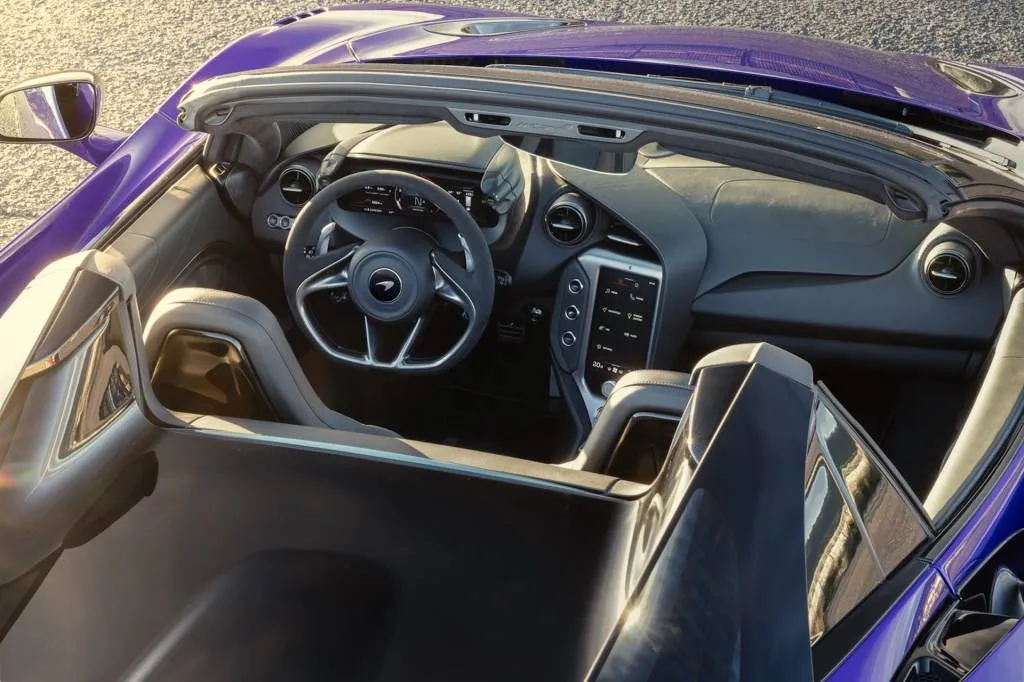
2024 McLaren 750S first drive, Las Vegas, February 2024

2024 McLaren 750S first drive, Las Vegas, February 2024

2024 McLaren 750S first drive, Las Vegas, February 2024
It doesn’t come into play during my rain-soaked track drive, but the 750S has more downforce than the 720S thanks to an extended front splitter and a rear wing that is 20% larger but weighs 3.5 pounds less. Exactly how much downforce the car has seems to be proprietary for McLaren, but the company says the aero is better balanced as well. The wing can be partially deployed depending on speed for more downforce when cornering, left down for drag reduction, or fully deployed to act as an airbrake.
On the road or track, the 750S has some changes and amenities that make it easier to live with on a daily basis. The front lift system now has a dedicated dashboard button instead of a hidden stalk. It now takes 4.0 seconds to operate instead of 10, and it works with greater angles of steering, so you’ll be less likely to hold up traffic when turning into a driveway. Apple CarPlay is newly standard, and it’s run through an 8.0-inch vertically mounted touchscreen. While the screen has quicker responses, it’s on the small side and there is room on the center console to make it bigger. The standard carbon-fiber seats are very supportive and have just enough range of motion to set a comfortable seating position for most drivers. An even more supportive, tighter set of lighter weight sport seats is also available. They offer fewer adjustments but come with a 6-point harness for better track security.
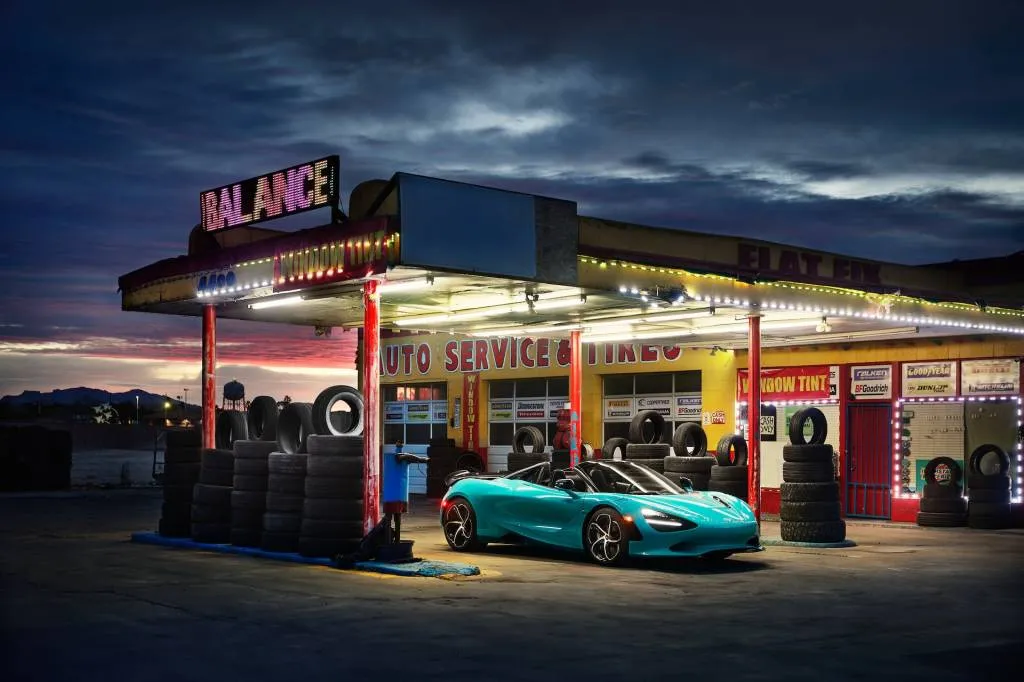
2024 McLaren 750S first drive, Las Vegas, February 2024
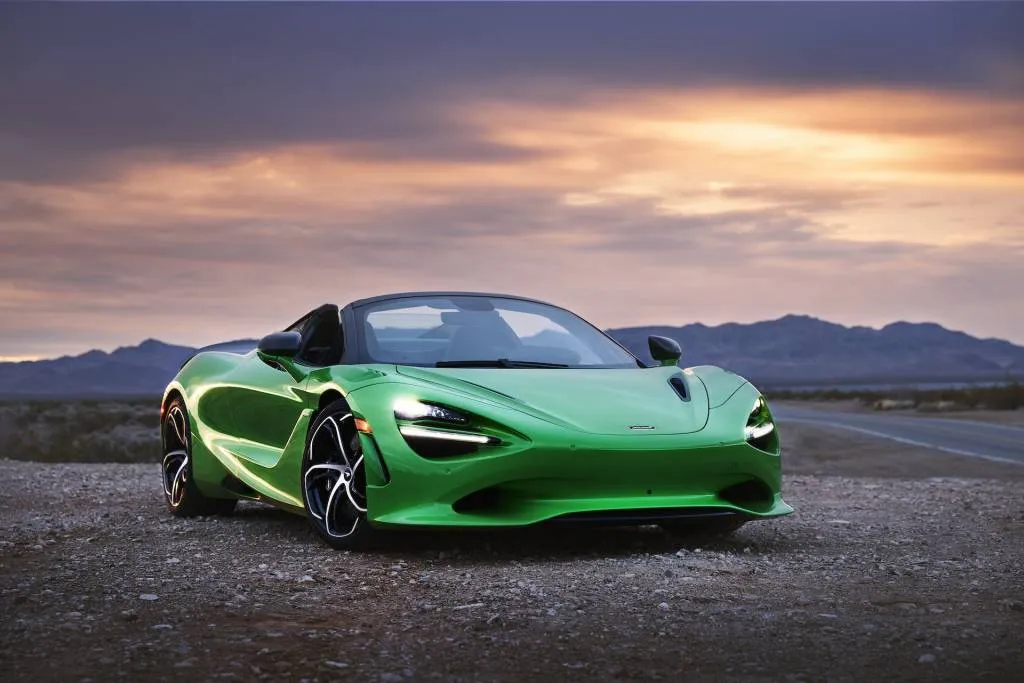
2024 McLaren 750S first drive, Las Vegas, February 2024
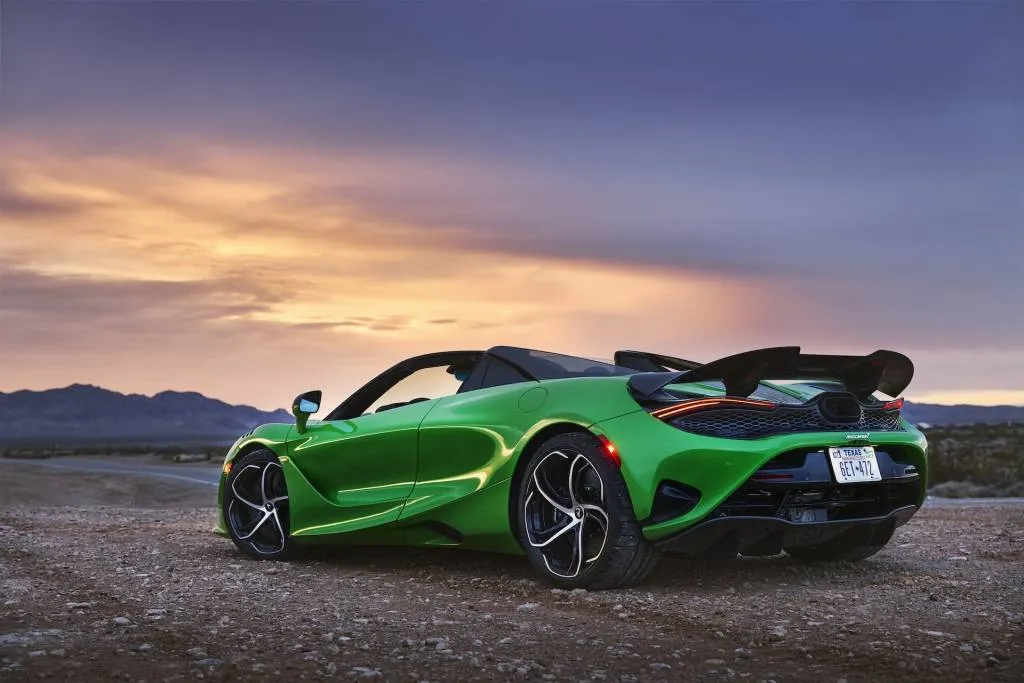
2024 McLaren 750S first drive, Las Vegas, February 2024
The 2024 McLaren 750S starts at $331,740 for the coupe, including $5,500 for destination and $2,240 for a required Americas Accessory Pack that includes things like a travel bag, a car cover, and a battery charger. The Spider, which has a power-folding hardtop that works in 11 seconds at speeds up to 31 mph, starts at $352,740. McLaren offers lots of options to get the car well into the $400,000 range, including a new $5,400 Bowers & Wilkins 12-speaker audio system, a $6,050 engine window behind the driver for the coupe, several interior and exterior carbon-fiber packages that can remove up to 30 pounds from the car, interior trim packages, different caliper colors, and front and rear parking sensors.
If you want a 750S, you’ll have to wait. Half of the total McLaren intends to build are sold and an order now will take a year to arrive. Should you get one, find a sunny day and a racetrack to learn what the car can do. It may not be as heart-in-your-throat thrilling as driving in the rain, but you’ll unlock far more of the potential of this amazing car.
McLaren paid for travel and lodging for Motor Authority to bring rain to Las Vegas for a day.
